Uncategorized
-
Chiropractic and Pregnancy: 5 big reasons to get adjusted when expecting
Leave a Comment
Nothing changes our lives like giving birth and raising a child. It is an AMAZING process! There are so many things that have to come together just right in order for an egg to even be fertilized, and even then about half of all pregnancies are ‘spontaneously aborted’ before the mother even knows she is pregnant. So it’s only natural to want to do everything you can to have the best pregnancy possible.
And it’s no wonder more and more people are turning to chiropractic to help with that. Each week we receive referrals from the local birthing center or the midwife group at a nearby hospital just for that. And when you understand the benefits for soon-to-be mom and baby, it’s a wonder it’s not suggested more often.
How chiropractic care helps with pregnancy
Pelvic/Back Pain: As the uterus expands during pregnancy, there is a lot more pressure on the pelvis and the ligaments that attach to the uterus. As the baby keeps growing, the center of gravity moves forward away from the body. It’s estimated that for each inch forward, there is an extra ten pounds of pressure on the low back! Getting adjusted regularly throughout pregnancy allows the spine and body to adapt to that stress and pressure, and reduces pain. Even WebMD is catching on to how beneficial chiropractic can be for pregnancy related pain
Better Nerve Function: Pregnancy and childbirth are pretty much entirely automatic. The autonomic nervous system controls them entirely, except for the pushing part. If there is pressure on the nerves to the placenta, or uterus, or cervix (which has to dilate to 10 cm for the baby to come out) then those nerves won’t work right. When we adjust the spine, we get pressure off the nerves, which helps all those things work better.
Easier Labor: The pelvis has to expand and open up for the baby to come out. A hormone called relaxin helps the ligaments, which hold one bone to another, to soften and stretch out. If the pelvis is out of alignment and stuck it will not be able to expand as much. Parts of the pelvis can actually block the way out, making delivery much more difficult and painful!
Proper Fetal Positioning: We get a lot of referrals for a BREECH POSITIONED baby. That’s when the head is up and the feet are down. It’s potentially life threatening, and almost every case winds up a c-section. Another position that can create problems is POSTERIOR POSITIONING, or the baby head down but facing the front instead of back. Posterior births produce ‘back labor’, which causes intense pain for the mother. The more uncomfortable the mother is, the greater chance of medical intervention. This can also lead to fetal distress, which ends up in a c-section. Aligning the pelvis throughout pregnancy keeps pressure off of these ligaments, and the parts of the uterus that attach to the pelvis. This helps create more room inside for the baby to move around and get into proper position.
Quicker Recovery Time: Birth causes a lot of pressure and stretching to the pelvis and to the ligaments holding everything together. If the pelvis is out of aligment before labor, there’s a chance that ligaments can be damaged as it expands. Also when the pelvis heals, if it doesn’t come back together in the right way there can be A LOT of pain. Research has shown that regular chiropractic care during pregnancy reduces the occurrence of SPD (SYMPHYSIS PUBIS DISORDER) an extremely painful post-partum condition when the 2 pubic bones don’t realign correctly.
Even though the RESEARCH shows chiropractic care is safe and effective, make sure to find someone certified to treat pregnant patients. Since the ligaments are already more stretchy and loose during pregnancy there is a greater chance of injury if the doctor is not properly trained.
For more information about chiropractic and pregnancy check out the International Chiropractic Pediatric Association website http://www,icpa4kids.org They have a TON of great and free research articles.
-
5 Tips to Get Rid of a Headache
Leave a Comment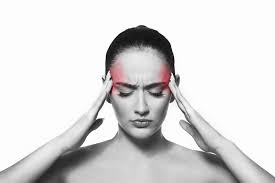
Nothing can ruin your day like a headache. We’ve all had them, some of us more than others. Some are mild, dull annoyances, while others can be migraine quality, forcing us to hide in a dark room, sometimes even throwing up, or losing an entire day or work. I often hear people say, “I’ve just learned to live with it.” Or, “I’ve tried EVERYTHING!” The truth is headaches are not normal, and they shouldn’t be something you just have to live with. Here are 5 simple and effective things you can do right now to help.
1) Drink more water! For more on the importance of water, check out this article
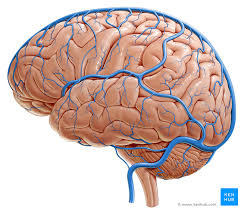
Dehydration is probably the most common cause of headaches. The blood vessels around the brain, mainly the veins, are incredibly sensitive. They are called the Dural Sinuses, and they don’t work like the regular veins you see in your arms. When we aren’t drinking enough water they aren’t as full, and this drop in pressure can cause a headache. So many things can dehydrate us: eating salty or sweet food, sweating too much without rehydrating, certain medications, drinking too much caffeine or alcohol, even sports drinks can cause dehydration since they have such high levels of electrolytes. Remember, next time you get a headache drink two big glasses of water ASAP.
2) Pressure Points: Rub any tender points at the base of skull. Massage can be helpful for relaxing tight muscles that can cause head and neck tension, but there are more specific, more effective points for relief. Feel from the bump behind your ears all the way to the bump in the center of the back of your head. If you feel any sensitive spots, push with firm pressure and rub them for about 30 seconds. Keep doing this, each time a little higher or lower on the head anywhere you find a sensitive spot.
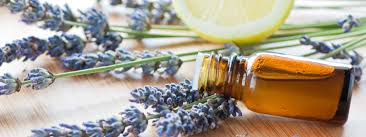
3) Essential Oils: Peppermint, Lavender, Eucalyptus and Rosemary are four of the best oils for headaches. Peppermint: rub a few drops of peppermint oil on the temples and back of neck for a tension headache. This one is also good for focus and concentration Lavender: can be used just like Peppermint oil for tension headaches. It can also be added to a warm bath, or a few drops can be put into a spray bottle of water and used on the face and neck. Eucalyptus: pretty similar to the last two, but also a great expectorant and can be rubbed on the chest to relieve pressure. Rosemary: is also good for tension headaches, but is really effective if the headache is from low blood sugar. With any essential oil you should use a carrier oil. This is a regular food grade oil, like Coconut or grape seed. Put some in your hand or a small dish and then add the Essential Oil to it. Essential oils are very strong and some can cause skin irritation. Remember, a little bit goes a long way.
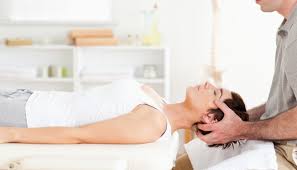
4) Get Adjusted!: When the bones in the neck move out of alignment a headache can quickly follow. The pressure from on the nerves that come out between the bones creates irritation, and these nerves go to the entire face and head. There’s actually a word for it: Cervicogenic. These links below have a bunch of research studies about headaches and getting adjusted.
http://www.chiro.org/LINKS/headache.shtml#Articles
http://icpa4kids.org/Chiropractic-Research/Headaches-/-Migraine/
You’ll find over 30 studies on everything from the common headache, to migraines, to post-concussive, even pediatric headaches and how chiropractic care can help.
5) Chemical Origin: Many headaches are caused by a build-up of toxins in the body or certain chemical toxins, sometimes even a food additive. Many people have headaches from MSG, Nitrates/Nitrites, Gluten (wheat), food preservatives/dyes, even plain old sugar. Keeping a food journal can help you identify the types of foods/additives that you react to. Cleansing can help if it is due to a build-up of toxins.
While medication has its place, over-medicating can often create worse effects than the original issue. Over 125,000 people a year die from NSAIDS (Ibuprofen, Naproxen, etc). Opiods have created an epidemic of addiction, and many people who start with pills wind up switching to a much cheaper form, heroin, when they can’t get the scripts refilled anymore. There are much better choices out there to get to the root cause of the headache and not just mask the symptom.
So please, if you or somoeone you know suffers from migraines or headaches, give us a call, shoot us a message, or pop in for a free consult. We’ll getcha’ feelin good in no time!
-
Top 6 Things to do After an Injury
Leave a CommentWe’ve all hurt ourselves before. Maybe you twisted your ankle on the stairs, or playing a sport. Maybe you hit your elbow or your knee on something. Or you strained your back lifting something you shouldn’t have. Hey, sometimes you can just wake up with a pain that seemed to have come out of nowhere!
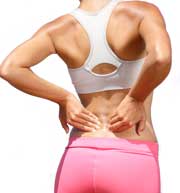
So what is the best thing to do? With so many ‘Google Doctor’s’ out there I’m sure you could ask 10 different people and get 10 different answers. I’ll simplify it for you. When you get injured, there is inflammation. It’s the body’s first stage of healing. To treat inflammation, start with the acronym R.I.C.E.
Rest– Give the body time to use its energy for healing. This will help reduce inflammation
Ice– COOL the inflamed area. DO NOT USE HEAT!
Compression– Pressure helps keep the swelling down, and helps rest the area by keeping it more still
Elevation– Keeps fluid from building up due to gravityI can’t tell you how many people have come in after an injury, put heat on it, and were way worse the next day. Cold will take the edge off by contricting the blood and lymph vessels and creating a numbing effect. Just remember: Inflammation has the term FLAME in it. Cool the flame, don’t add more heat.
There are also topical cooling gels that work pretty well. Things like BioFreeze or IcyHot have the same active ingredient. They’re pretty cheap and easy to keep in a first aid kit.
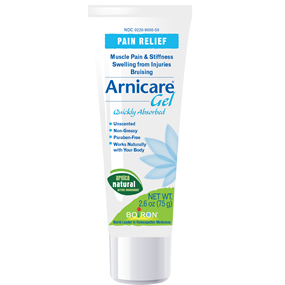
Another topical that is always in my first aid kit is Arnica Gel. Arnica Montana is a homeopathic which speeds up healing and tissue repair. It helps with pain relief, inflammation, and bruising. For most injuries the first thing I do is put on Arnica and then a cold pack.
Pressure, applied the right way, can also help. If there is a muscle that is cramping or tight, place steady pressure in the center of the tight spot and gently move the muscle. If it is more of a joint sprain/strain injury, compress the area with an ACE bandage or medical tape.
If the injury is to a joint like the ankle or knee, elevation is important. Sit with the injured leg propped up. Elevation will help the inflammation and swelling drain out.
Chiropractic
Once the initial inflammation has gone down a little it’s easier to tell just how bad the injury is. Scheduling an appointment for an adjustment is what I would do next. It is VERY important to make sure that the joints are in alignment and pressure is off of the nerves so the body can heal properly. And most of the time you’ll leave feeling much better than when you came in.
Feel free to give us a call or send us a message if you have any questions about treating an injury. We’re here to help in any way we can!
-
Can You “Mess-up” an Adjustment?
Leave a CommentI get this question a lot. “Can I mess up my adjustment?” And I get it. Who’d want to mess up that great adjustment that they just paid for? People will leave trying not to turn their head, keeping perfectly still, afraid to do any activity afterwards. They ask if they should go home and lay down or rest.
The truth is, you can’t mess up an adjustment. And one of the best things to do after an adjustment is to MOVE!
Think about it like this. We all have stressors, physical, chemical, and mental/emotional, that can cause tension in our bodies (as well as our spine). These stressors can cause things to move out of alignment. This misalignment causes pressure on our nerves, and interferes with the signals that pass through them. That is what we call a subluxation.
When we remove the subluxations, our nervous system works better. Our body responds better to the stress it experiences. We are in a more ‘adaptable’ state. This is actually a good time to be more active, not laying around resting. When you are moving (with good posture and form, of course) you are sending tons of information into the brain, and this actually helps the solidify the good form and realignment in the body.
I also hear people say that they’ll come get adjusted after they have some kind of intense physical activity. A patient of mine recently said they were waiting to come get adjusted until after they finished a remodeling project. I totally understand that, but the best time to get adjusted is actually before intense physical activity. This is why athletes and performers see their chiropractor before their performance. With the subluxations removed, the body responds much better, and much more appropriately to the stress it experiences.
So remember, go out and move around after an adjustment. Go work out, take a walk, have fun! Your brain will thank you 🙂
-
Stress and Your Adrenal Glands: 3 Easy Ways to Nourish the Adrenals
Leave a CommentMost of us know a little about stress. We hear about it so much it’s become cliche. But how much do you really know about what happens in the body when we’re stressed?
Stress begins in our mind. We perceive a threat, get startled, or even think ourselves into a stress response with our worrying or anticipation. Once our brain is convinced there is some kind of threat, a small gland above our kidneys takes over.
Our adrenal glands sit on top of our kidneys, right by the abdominal aorta and inferior vena cava, two of the largest blood vessels in the body. The hypothalamus, a very important gland in the brain, stimulates the adrenal glands, which release stress hormones into our bloodstream. Think about how quickly you feel your heart speed up after hearing a loud noise, feeling something unexpected touch you, or seeing flashing lights in your rear view mirror. In an instant you had to detect the threat, your brain had to process it, stimulate the hypothalamus to stimulate the adrenal glands, secrete the stress hormone and have it travel through your bloodstreeam. It’s amazing how fast that happens!
Then there’s prolonged or chronic stress, repetitive events or activities that put a strain on our body. Could be work, junk food, smoking, pain in the butt relatives… you get what I mean. Our body responds in a similar way to these events, with increased cortisol, the stress hormone. This hormone raises blood pressure, blood sugar, dialates the pupils, changes the brain to rely more on stored muscle memory rather than cognitive frontal lobe activity, sends blood away from our organs and to our muscles… it helps us to SURVIVE! And it’s good! For short bursts, not for every day, hours on end, day and night…
This can weaken our cardiovascular system, digestion, immunity (click HERE for more about immunity), brain/nervous system, and so much more! So what do you do? Here are 3 easy tips to help these little guys out:
1) Avoid or Adapt
There are definitely ways we can avoid stress and stressful situations, but sometimes we can’t. It is ineveitable that we’ll have stress in our lives. So we need to focus on adapting to it. In this article we talked briefly about how exercise can help you adapt to the stress you experience.2) Mind over Matter
With regular practice we can overide some of the mental activity that stimulates the stress response. Meditation, prayer as well as activities like yoga can decrease the stress response and establish better thought patterns to help in the future.3) Nourish
Most of our diets lack the proper vitamins and minerals that nourish our glands. There are also a lot of chemicals we encounter that interfere with our hormones (called endocrine disruptors) like BPA. This, as well as the fact that most of us are wearing out our adrenal glands makes it ESSENTIAL that we give these glands the right nutrition. We carry products in our office which directly feed the part of the endocrine system that needs it. We also have the highest quality whole food type supplements to nourish the body and the endocrine system. And we use the highest quality naturally sourced herbs, since they have been shown to cause a quicker physiological change in the tissues they effect. More information can be found HERE.The endocrine system is a massively tangled web, where one part affects multiple others, turning some pathways on or off, then affecting a bunch more . Adrenal exhaustion directly affects the thyroid gland, leading to many false diagnoses of thyroid problems that are actually just adrenal fatigue. It also affects the sex hormones, the pancreas, Para-thyroid, liver, immune system, digestive system, and well, most every other body system directly or indirectly. For more information about the thyroid/adrenal connection take a look at www.stopthethyroidmadness.com
Whether you want to start meditating, get into a better exercise routine, or find the right products to help with your stress, we can help. Call or message us to schedule a free consult. You’ll be glad you did.
-
5 Quick Tips to Stay Healthy not Sick
Leave a CommentWhether it’s a summer cold, allergies, or the flu no one likes being sick. We miss work days, lose income, are unproductive, or just plain miserable. Here are a few quick tips to keep your immune system in top gear!
Step One: Eat right!
Nothing can replace eating well. Ever notice when ‘flu season’ starts? Right around the time we start eating like garbage. Halloween, followed by Thanksgiving, Christmas, Hanukkah, New Years… Sugar has been shown to reduce immunity by about half. Ever notice how many kids get sick the week after Halloween? I get it though, we want that special sweet-treat, and we want to celebrate with our friends and loved ones. Just make sure you don’t over-do it. Make sure to eat fresh fruits/veggies daily. The best meals are made up of things that actually grow, not things that are processed to last on your shelf for months at a time. Getting enough WATER is also part of eating right. Half of your weight (in pounds) = Ounces of water to drink daily.
Step Two: Exercise
Exercise is our body’s natural way of adapting to STRESS. Our stress hormones give us energy for a fight-or-flight response. So what should you do when you are stressed? USE THAT ENERGY! And stop telling yourself you don’t have time. Sometimes our best workouts are the ones we almost skip because we don’t have enough time. Just get out and do something. 5 minutes, 10 minutes… a little bit is better than nothing at all, but 25-30 minutes is ideal. Strive for increasing your intensity each time you workout.
Step Three: Supplement, Supplement, Supplement!
Let’s face it: None of us eat perfect all the time. And in the winter or in cloudy areas when we don’t have bare skin exposed to the sun, we don’t make enough vitamin D. If you REALLY want your immune system in prime condition for this winter start now. Vitamin C, D, and other anti-oxidants, Probiotics, Echinacea, Astragalus, Silver Hydrosol… there are so many products on the market. If it feels overwhelming come in for a free consult so we can find out what is right for you!
Step Four: Get Enough Sleep.
Your body can’t heal or fight off invaders if you’re not well rested. Most of us need 6-8 hours a night of UNINTERUPTED sleep. Make sure you’re getting to bed at a consistent time and turn off any distractions, like the TV or your phone. Make sure your room is dark. This helps the body’s internal system, your pineal gland, get you to sleep faster and stay asleep longer.
Step Five: Get Adjusted!
Removing stress and interference from the nervous system can immediately boost immunity. A good adjustment can boost a lagging immune system or calm a hyper/autoimmune system. There have been studies dating back to the 1940’s showing increased white blood cell production after an adjustment. One of the first things we do in our family whenever anyone feels sick is to get adjusted. But like all the other things listed above, chiropractic works best as a preventative.
Feel free to add your favoirite tips in the comments section!
Dr. Powell
-
THE PAIN OF GROWTH
Leave a CommentWOW! What a great month it has been! So much has changed. Many hours were put into breaking down everything in our old office and moving it piece-by-piece to our new space. Renovations were done. Carpets were torn out, yanked and ripped bit-by-bit from the floor they were once glued to so that the new carpet could be installed. Walls were scraped, sanded and spackled so that the proper paint could be applied. Four-hundred pound tables were heaved, pushed, pulled and thrusted in any way possible in order to get them to the proper position within the rooms. Network cables were ran, re-ran, and ran again until they were right. So many little things had to be done so that we could open and begin to care for you, our incredible clients, in this new office space.
And then… the pain set in.
Each movement sent shooting, cramping pains throughout my limbs. The dull ache in my back reminded me day after day of the immense work that I had done, and still was doing. It was as if it was saying, “STOP! You are doing too much! You’re just one man!” And guess what… it was right! My body was working perfectly. My pain was there as a sign, a reminder not only that I had pushed myself pretty hard, but also as an early warning system to prevent me from hurting myself by continuing.
You see, almost all growth requires us to push ourselves, to reach beyond our comfort zone, get a little uncomfortable. This is how we grow. Bones strengthen only when stressed. Muscles grow in size only after they strain from so much effort that they use up all the oxygen around them. Our mind learns only after we force the use of a specific pathway over and over again until the brain “glues” it into place. Nothing comes without effort.
After a hard workout, you should feel a little sore. After doing a new workout, you should feel a little sore. But there is a difference between feeling a little sore because of pushing yourself and hurting because you have damaged your body.
Pain is our friend. No, that is not a typo. Yes, I meant to say that. In fact, look at what happens when someone can’t feel pain.
There are neurological conditions out there where people lose the ability to feel pain. They bump their toes into things, they bleed, get infected, in some cases gangrenous, and need to be amputated. Others will burn themselves and not know about it. They risk serious infection, loss of body parts, the risk of bleeding to death, and many other complications because their body cannot tell them there is danger.
Pain is GOOD! It often brings clients into our office. They realize it is not natural to have headaches or low back pain, shoulder pain, etc as much as they do. They listen to their body and want to know why this pain recurs. They eventually understand the relationship between their pain and their nervous system, and learn how to prevent recurrences in the future through Wellness-based chiropractic care, not symptom-based care.
Pain is an early warning system designed to stave off danger. Fail to pay attention, and you risk damaging the very body that tried to warn you. Listen to those subtle clues, and you will have a long and wonderful relationship with the “’human suit” you are wearing.
-
WATER: THE FOUNDATION OF ALL LIFE
Leave a CommentI often get the question, “What is the first thing I should change to get healthier? Should I take vitamins? Exercise? Meditate”
There are so many products, services, new technologies, superfoods, and healing methods out there that it can get pretty confusing. There is no “one thing’” that will give you perfect health, but there is one thing I find most people fall short on: water.
Think about this: the earth is made up of about 70 percent water. So are our BODIES! Water is one of the ONLY substances that actually gets LESS dense as it changes from a liquid to a solid. Pretty much everything else gets MORE dense as it freezes, because the molecules are more tightly packed. As a gas, things are less dense, and expand to take up a larger space. What would happen in our oceans and lakes if ice was more dense than water and sank? The ice would sink and crush everything! No water bound animals would survive. No plants would survive. Our oceans, lakes, rivers and streams would be lifeless if they froze. But that isn’t what happens. Pretty amazing, right?
Water is the medium for most chemical reactions in the body. It also cleanses, and flushes out harmful, destructive toxins as passes from our bodies. It is important for healing, for digesting our food, for our mood and energy, for our immunity, for… well, everything! We can go days without eating solid food, but how long can we go without water? After a few days we would be suffering from dehydration. The blood would get thicker from lack of hydration, making the heart work harder to pump the blood to the brain and the rest of the body. Our energy would drop, and the body would slow. Within a week, we’d be dead.
So how much water do we need?
Follow this basic guide:
Your body should get as many ounces as half of your weight (in pounds). If you weigh 100 lbs, you need 50 ounces of water. 200 lbs = 100 ounces, etc. You can’t substitute juice, soda, tea or other beverages, because the sugar or mineral content makes you need more water! You’ve got to drink plain water.
For every caffeinated or alcoholic drink you have, you need an extra 8 ounces. Caffeine and alcohol are diuretics. They cause you to excrete more water than they give you, leaving you with a negative overall water gain.
If you exercise or are are sweating a lot, you need more water. An extra 16-24 ounces is recommended per pound lost during a workout. An average, healthy person can produce as much as 32 ounces of sweat during an hour of moderate to intense exercise. You can weigh yourself before and after to find out how much water weight was lost, or you can just estimate.
Look at your urine color. The is probably the easiest and most effective measurement of hydration level. If it is clear coming out, you’re all good. The darker the color, the more water you need. This is also a good way to measure your kids hydration level.
As soon as you wake up each morning, drink two large glasses of water before doing anything else. This will this make sure that you get a good start on your hydration for the day. This “primes-the-pump,” by kick-starting your metabolism and flushing out the digestive tract, and will give you a great start to your day.
Do this for four weeks, and you will feel like a new person!
Make sure that you are drinking purified water. While a Brita or Pur filter is much better than tap water, an even better choice is reverse osmosis. Home kits cost between $200 -$300, and will last for years. Replacement filters cost between $50 and $100 a year. It is one of the best investments our family has ever made.
So drink up. Cheers!